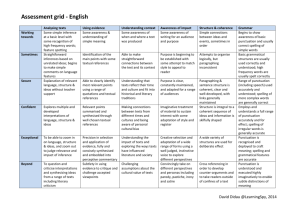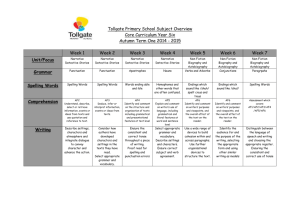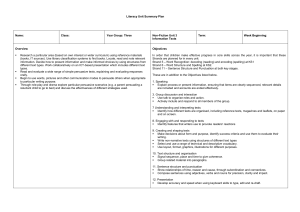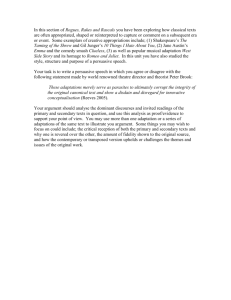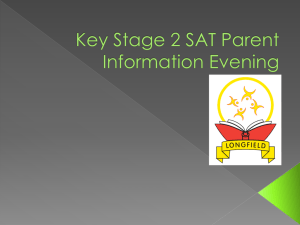Year 7 Personal Writing Piece
advertisement
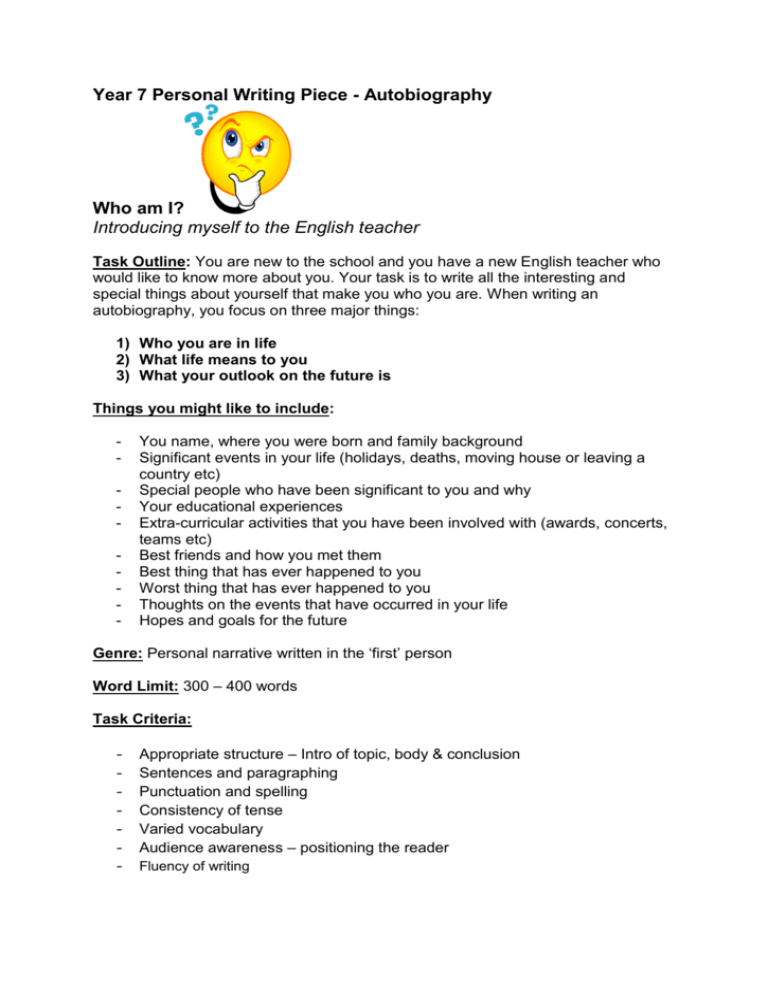
Year 7 Personal Writing Piece - Autobiography Who am I? Introducing myself to the English teacher Task Outline: You are new to the school and you have a new English teacher who would like to know more about you. Your task is to write all the interesting and special things about yourself that make you who you are. When writing an autobiography, you focus on three major things: 1) Who you are in life 2) What life means to you 3) What your outlook on the future is Things you might like to include: - You name, where you were born and family background Significant events in your life (holidays, deaths, moving house or leaving a country etc) Special people who have been significant to you and why Your educational experiences Extra-curricular activities that you have been involved with (awards, concerts, teams etc) Best friends and how you met them Best thing that has ever happened to you Worst thing that has ever happened to you Thoughts on the events that have occurred in your life Hopes and goals for the future Genre: Personal narrative written in the ‘first’ person Word Limit: 300 – 400 words Task Criteria: - Appropriate structure – Intro of topic, body & conclusion Sentences and paragraphing Punctuation and spelling Consistency of tense Varied vocabulary Audience awareness – positioning the reader Fluency of writing Structure of writing 1) Introduction (Establish topic and create reader expectation) 2) Body of writing (main ideas) 3) Conclusion (Summary and final statement) Process of writing an autobiography: 1) Compile a list of important events in your life. We'll worry about writing and the introduction later on. Try to think of things that helped shape your view of the world and affected who you are as a person. Sort your list chronologically. Select the most important events that you want to focus on. 2) Focus on single events. For each event that you wrote down, write about it as if you are writing only about that topic. 3) Draw a thread of events together. After you have completed step 2 for every event, begin to tie the events together, explaining how they relate to one another and how they have influenced your life. 4) Add the introduction. After you have written the body of the work, go about writing the introduction. It needs to capture the reader’s attention. 5) Create the conclusion. After writing your introduction and body, reread the work and sum everything up in the conclusion. Explain how this has brought you to where you are today, how these events have truly affected your present way of life for better and for worse. 6) Proofread for errors in punctuation, spelling and expression errors. 7) Take your paper and have someone else read and tell you what they think. 8) Redraft your original draft. 9) Re-read, reedit again to ensure you have amended all errors. 10) Rewrite one more time for best writing sample. Tips: - Split the events of your life into categories (e.g. good and bad) Ask family and friends for information to clarify details (You need to be objective and tell the REAL story of your life) Choose the details of your life that could be significant and interesting to the reader Useful Websites: http://www.bham.wednet.edu/bio/biomaker.htm Year 7 – Writing Task (Autobiography) SKILLS 4 Produce a variety of texts (print and electronic) for different purposes using structures and features of language appropriate to the purpose, audience and context of the writing Begin to use simple language and visual images Use a range of vocabulary, a variety of sentence structures , and use punctuation accurately Identify and use different parts of speech (such as: nouns, pronouns, adjectives, comparative adverbs etc) Use a range of approaches to spelling 4.25 4.5 Compose a variety of texts (print and electronic) for a range of purposes – imaginative, speculative, explanatory and persuasive Compose a wide range of text forms, including narratives, reports, explanations, procedures and points of view Development of topics in coherent ways according to the purpose, and the needs and experience of the intended audience Use a variety of sentence structures, including combinations of simple and compound sentences for particular effects Composition of persuasive texts about contemporary issues, including justification of personal points of view with supporting arguments Experimentation with different techniques to influence audiences and achieve the intended purpose of their writing Correct spelling, except of unfamiliar words with unusual spelling patterns Awareness of grammatical conventions; for example, tense and subject-verb agreement and appropriate punctuation Use of headings and sub-headings in the organisation of information in texts Use of a range of planning strategies Employ a variety of strategies for writing, including note-making, using models, planning, editing and proofreading Task Criteria Appropriate structure – Intro, body of paragraphs & Resolution Sentences and paragraphing Punctuation and spelling Consistency of tense Varied vocabulary Audience awareness – positioning the reader Fluency of writing 4.75 Control of writing texts in various forms, including narratives, reports, explanations, procedures and persuasive texts Composition of imaginative and informative texts presenting challenging ideas and issues Appropriate use of figurative language to achieve particular effects Strategic use of headings, subheadings, graphics, photographs and art work to support the text Use of a variety of software packages to plan, organise, revise and present electronic texts Use of editing and proofreading skills for clarity and cohesion of ideas VL VL VL VL VL VL VL VL L L L L L L L L M M M M M M M M H H H H H H H H VH VH VH VH VH VH VH VH Name: _________________________________ Overall result: _____ Comments: ________________________________________________ ________________________________________________ ________________________________________________
